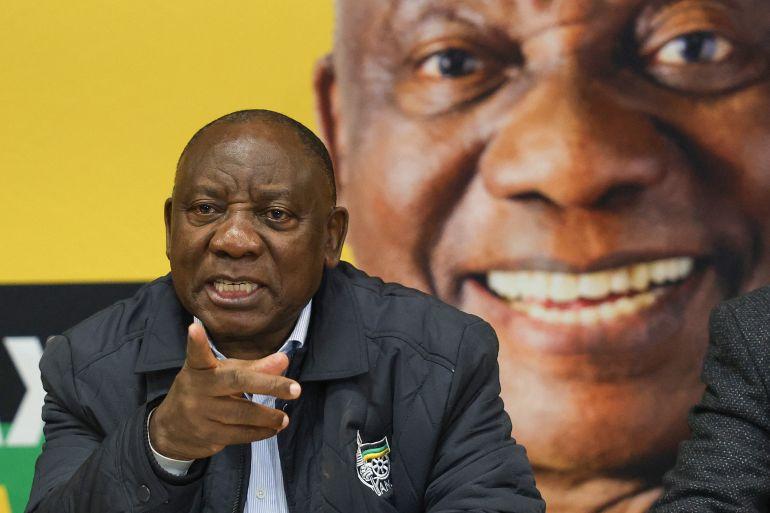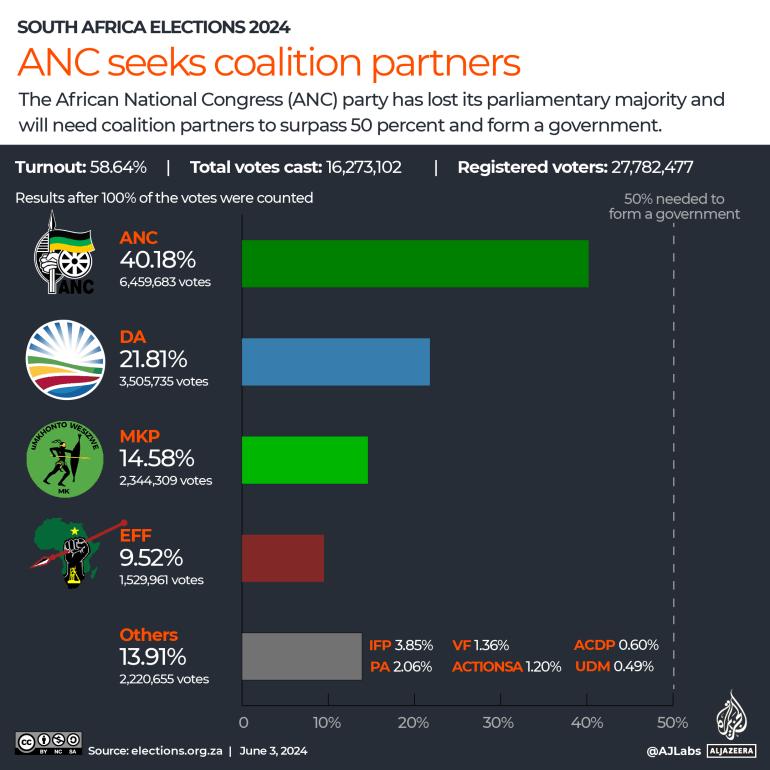Source: ALJAZEERA
ALJAZEERA MEDIA NETWORK

As South Africa's ANC faces a significant challenge, it proposes a national unity government to avoid reliance on any single opposition group.
South Africa’s governing African National Congress (ANC) announced its intention to create a national unity government involving major opposition parties. This development follows the ANC losing its majority in the recent general elections, marking the first such occurrence since the nation’s first post-apartheid elections three decades ago.
The announcement was made by President Cyril Ramaphosa on Thursday, after extensive discussions within the ANC and among other significant parties. There had been speculation about whether the ANC would form a grand coalition with the Democratic Alliance to maintain parliamentary control or collaborate with former President Jacob Zuma’s uMKhonto we Sizwe, which gained at the expense of the ANC.
Analysts suggested that either of those coalitions might make the ANC overly reliant on a single opposing party. By opting for a broad, multiparty coalition, the ANC can mitigate that risk.
The ANC has until June 18 to finalize the details of this national unity government.
But what exactly is a national unity government, how could it function, and has it been tried in South Africa or elsewhere before?
 INTERACTIVE - South Africa elections results 2024-1717388721
INTERACTIVE - South Africa elections results 2024-1717388721
A national unity government aims to include a wide range of major political parties in the legislature, including opponents. In South Africa’s case, this setup will allow various parties to manage different governmental ministries.
Such governments are often created during national emergencies, like wars or economic challenges, or when deep national divisions make clear mandates for any single party impossible, as seen in South Africa today.
This arrangement often results in a minimal opposition presence in parliament.
In a multiparty democracy, there’s typically a vote threshold for parties to join a national unity government, often around 10 percent. However, ANC leaders might lower this bar. The five largest parties after the ANC in last week’s election, interested in a ruling coalition, are:
Yes, South Africa’s first post-apartheid government under Nelson Mandela was a national unity government lasting three years. In the 1994 election, the ANC won 62.5 percent of the vote, just short of the required two-thirds majority to control parliament. To bridge political gaps, Mandela included parties with at least 10 percent of the vote, forming a cabinet from the IFP, the National Party, the ANC, and smaller parties.
Although this inclusive approach was initially successful, the National Party eventually withdrew due to governmental disagreements, and the party dissolved in 2005 due to its tarnished reputation.
Several nations have implemented national unity governments in crises:
Your email address will not be published. Required fields are marked *